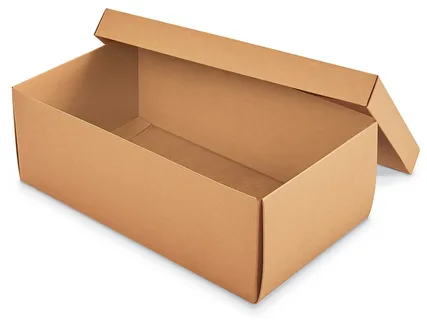When it comes to packaging and shipping footwear, understanding shoe box dimensions is essential. Whether you’re a retailer, manufacturer, or consumer, knowing the right size of a shoe box helps ensure the product’s safety, saves costs, and enhances the overall customer experience. In this article, we will explore various aspects of shoe box dimensions, including standard sizes, popular brand specifications, and considerations for shipping.
Standard Shoebox Size
Standard shoebox sizes vary depending on the type of footwear and the target audience. For instance, boxes for children’s shoes differ significantly from those for men’s or women’s footwear. Typically, a standard shoebox for adult shoes measures around 13 inches long, 7.5 inches wide, and 4.5 inches tall. However, this size may change based on the shoe style, such as sneakers, heels, or boots.
Children’s shoe boxes are smaller, often measuring approximately 8 inches long, 5 inches wide, and 2 inches tall. For boots or larger footwear, manufacturers opt for boxes that are longer and taller to accommodate the added dimensions. Understanding these variations is critical for choosing the right packaging solution.
Nike Shoebox Dimensions
Nike, one of the most popular footwear brands, uses shoebox dimensions tailored to its wide range of products. The typical size for a Nike shoebox designed for adult sneakers is around 13.5 inches long, 9 inches wide, and 5 inches tall. For children’s shoes, Nike offers smaller boxes measuring approximately 10.5 inches long, 7 inches wide, and 4 inches tall.
The brand’s emphasis on sleek and sturdy packaging ensures that the product remains safe during shipping while also providing a visually appealing unboxing experience. Nike’s shoebox dimensions are also optimized for stacking, which is beneficial for retailers managing inventory in compact spaces.
Shoe Box Dimensions for Shipping
Shipping shoe boxes requires careful consideration of the dimensions to minimize costs and protect the product. The size of the box impacts the shipping weight and dimensional weight, which are key factors in calculating shipping costs. Smaller, snug-fitting boxes help reduce excess space, lowering the dimensional weight.
For most standard shipping needs, a box measuring 14 inches long, 10 inches wide, and 5 inches tall is sufficient for a single pair of adult shoes. However, bulk shipments may require larger boxes that can hold multiple pairs. It is also essential to consider the material of the shoe box, as sturdier materials provide better protection against potential damage during transit.
Importance of Choosing the Right Shoe Box Size
Selecting the appropriate shoe box size goes beyond aesthetics. It plays a crucial role in protecting the footwear, ensuring cost efficiency, and creating a positive impression on customers. A well-fitted shoe box minimizes movement within the package, reducing the risk of scuffs or damage. For online retailers, this is particularly important as customers expect their purchases to arrive in pristine condition.
Moreover, the right shoe box size reduces waste. Oversized boxes not only increase shipping costs but also contribute to unnecessary material usage. On the other hand, a box that is too small may compromise the safety of the product.
Custom Shoe Box Solutions
Many businesses are now turning to custom shoe box solutions to meet specific requirements. Customization allows for tailored dimensions, branding opportunities, and enhanced functionality. For example, eco-friendly materials can be incorporated to appeal to environmentally conscious consumers. Custom shoe boxes can also include additional features like handles or compartments for added convenience.
Retailers and manufacturers often collaborate with packaging boxes experts to design boxes that align with their brand identity while meeting practical needs. This approach ensures that the packaging is not only functional but also leaves a lasting impression on customers.
Tips for Measuring and Selecting Shoe Boxes
- Measure the Footwear: Always measure the length, width, and height of the shoes, including any additional accessories like laces or insoles. This ensures the box will fit snugly without unnecessary extra space.
- Consider the Material: Choose sturdy materials like corrugated cardboard for shipping to provide maximum protection. For retail displays, thinner materials may suffice.
- Account for Shipping Requirements: If the shoes will be shipped, factor in additional padding or inserts to protect against impact.
- Opt for Stackable Designs: Boxes designed for easy stacking save space and enhance inventory management.
- Prioritize Sustainability: Eco-friendly packaging options appeal to modern consumers and help reduce environmental impact.
Why Shoe Box Dimensions Matter
The dimensions of a shoe box can significantly influence various aspects of the footwear business. From reducing shipping costs to enhancing the customer’s unboxing experience, the right dimensions play a pivotal role. Brands that prioritize efficient, well-designed shoe boxes not only protect their products but also reinforce their commitment to quality and customer satisfaction.
In conclusion, understanding shoe box dimensions, including standard sizes, Nike shoebox dimensions, and shipping requirements, is essential for retailers and manufacturers alike. By selecting the right size and material, businesses can improve efficiency, reduce costs, and elevate their brand image. Whether you’re shipping sneakers, heels, or boots, the right shoe box dimensions make all the difference.





